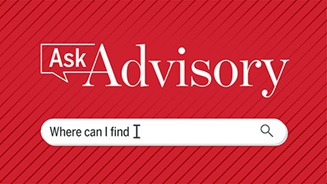Editor's note: This popular story from the Daily Briefing's archives was republished on Jan. 8, 2020.
Rana Awdish, a critical care physician at Henry Ford Health System, almost died in her own hospital. As Awdish fought for her life, she learned hard lessons about how doctors—herself included—often fall short in treating patients, and what it takes to provide truly compassionate care.
Writing in the New England Journal of Medicine, Awdish recalls how she "effectively bled to death in [her] own hospital" in 2008 when she was seven months pregnant. An occult adenoma in her liver, a type of benign tumor, ruptured and caused severe bleeding.
"I lost my entire blood volume into my abdomen," Awdish writes. Her blood became too cold and acidic to clot, and her organs failed. She had a stroke, and ultimately, she writes, "the baby I was seven months pregnant with would not survive."
Awdish pulled through and recovered thanks to the treatment she received, which included 26 units of blood products on the night of her collapse, five major operations, and extensive physical therapy. But she also learned things she "might not have wanted to know" about how doctors can fail their patients while getting "technical things so perfectly right," Awdish writes.
"There were disturbing deficits in communication, uncoordinated care, and occasionally an apparently complete absence of empathy," Awdish explains. For instance, Awdish says she was "horrified" when she heard a doctor say she was "trying to die on us." But then she remembered that as a critical care physician she had used similar language—and that, in fact, it's normal for doctors to have a subconsciously "antagonistic" relationship with patients, she writes.
And there were more acute moments of insensitivity. For instance, she received a bill for the attempted resuscitation of her child. The billing department explained the bill had been generated because she had not added the baby to her insurance.
It was a "trivial oversight [by] a department ostensibly not involved in patient care" that "had the potential to bring me to my knees," Awdish writes.
A new vision
Awdish says the experience "changed my vision of what I wanted our organization to be." She shared her story with colleagues and stressed the importance of working harder to provide empathetic, coordinated care.
Henry Ford responded "bravely," Awdish writes, and began "radically revising the way in which we introduce every new employee to our organizational culture." Everyone from physicians to transporters now hear about the highs and lows of Awdish's experience as a patient, including the acts of kindness performed by some clinicians.
New employees are also taught the difference between "avoidable" and unavoidable suffering. The goal is to "mitigate suffering by responding to the unavoidable kind with empathy and by improving our processes and procedures to avoid inflicting the avoidable kind whenever possible," Awdish writes.
In addition, employees are taught to discuss failures openly and about how transparency promotes accountability and quality improvement. "We believe that by focusing on our missteps, we can ensure that the path ahead is one of compassionate, coordinated care," Awdish writes. "The stories we tell do more than restore our faith in ourselves. They have the power to transform," she concludes (Awdish, NEJM perspective, 1/5; Gaines, Upworthy, 1/5; McNamara, Medscape, 1/9).
7 tools for implementing a holistic patient experience strategy
Get tools to help cultivate caregiver empathy, overcome universal process barriers to a patient- and family-centered experience, and diagnose institution-specific process barriers.
Don't miss out on the latest Advisory Board insights
Create your free account to access 1 resource, including the latest research and webinars.
Want access without creating an account?
You have 1 free members-only resource remaining this month.
1 free members-only resources remaining
1 free members-only resources remaining
You've reached your limit of free insights
Become a member to access all of Advisory Board's resources, events, and experts
Never miss out on the latest innovative health care content tailored to you.
Benefits include:
You've reached your limit of free insights

